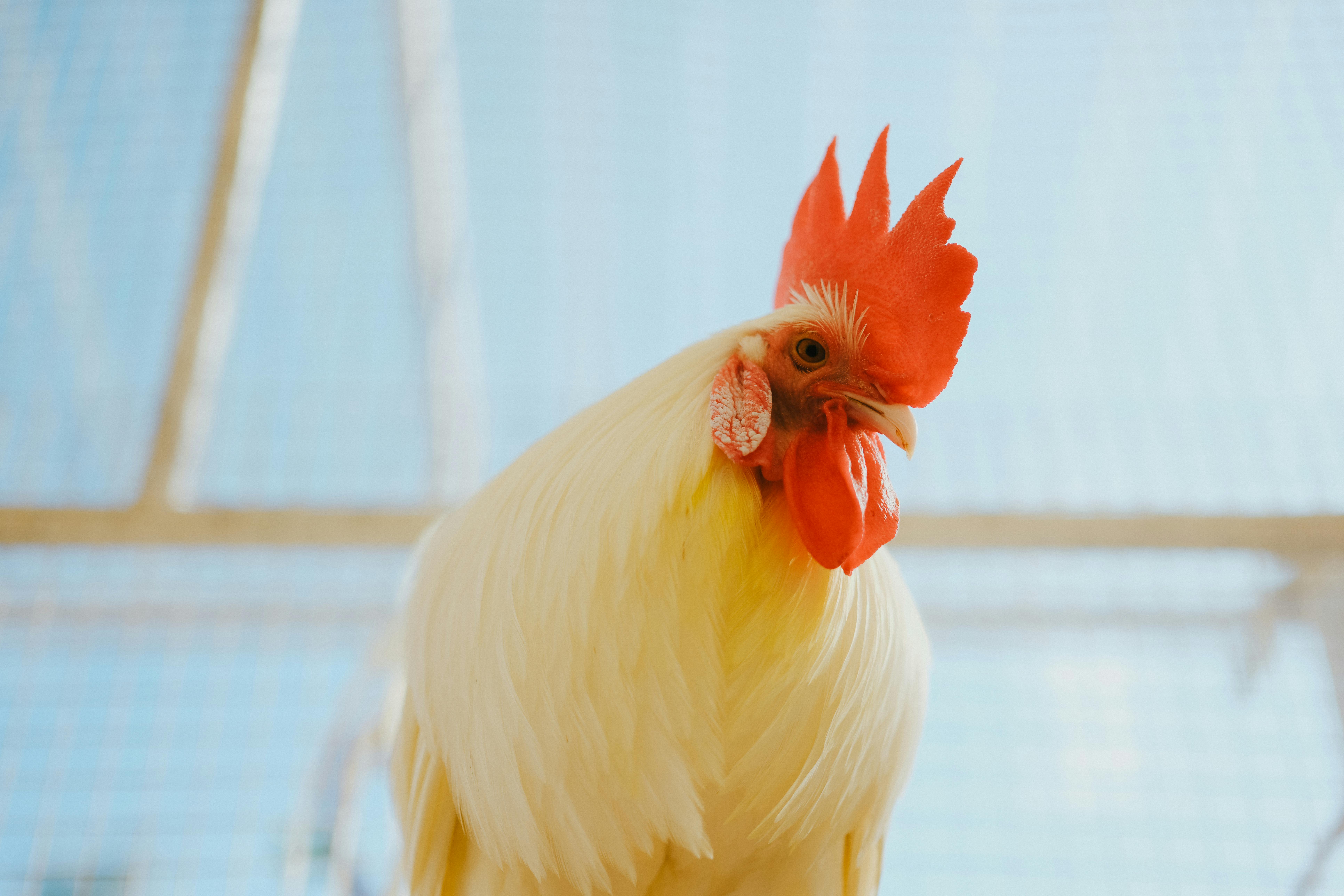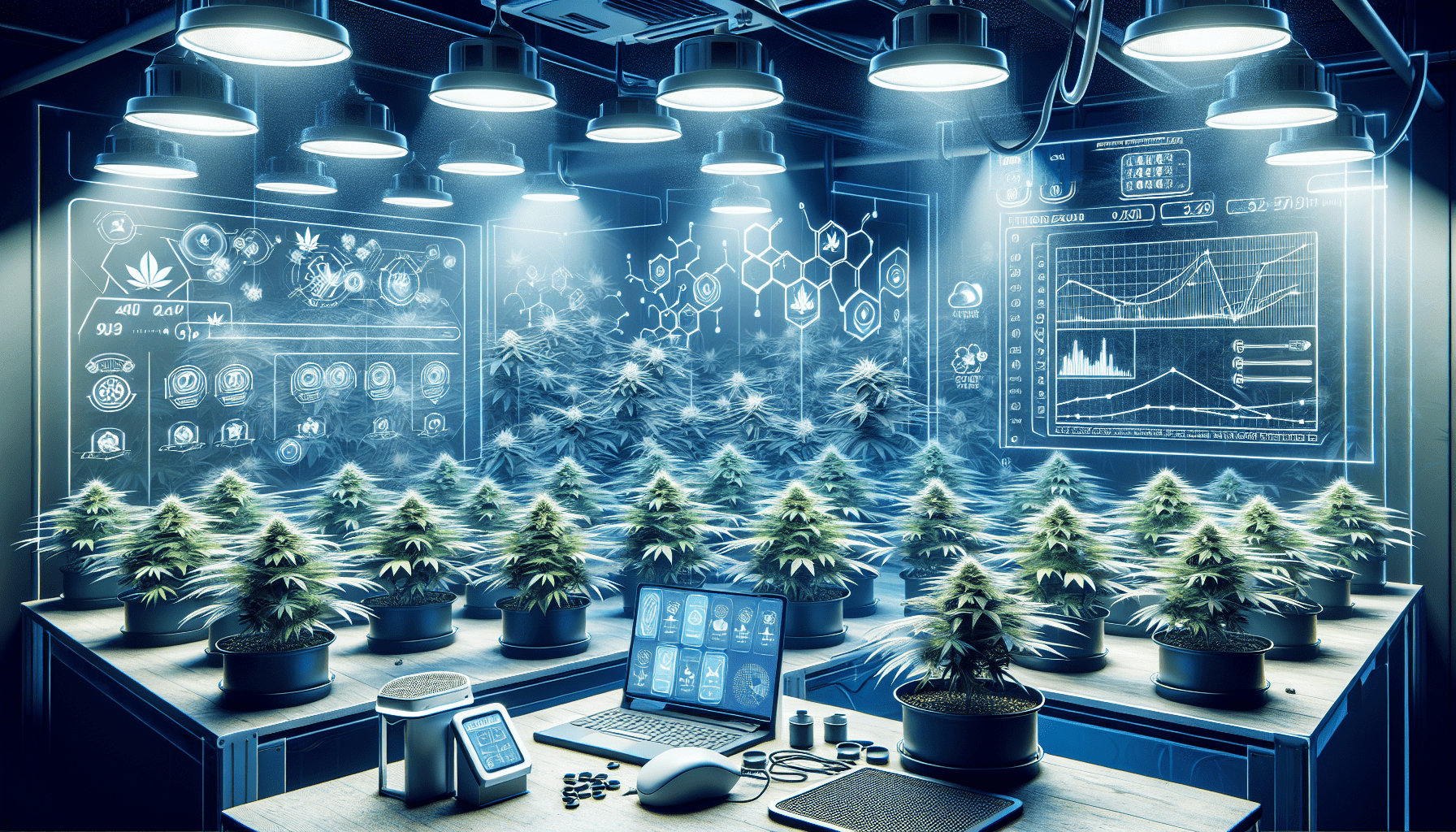Imagine a future where cannabis cultivation is no longer out of reach for the average person. Thanks to advancements in technology, growing your own cannabis plants has become more accessible than ever before. From automated systems that monitor and control every aspect of the growing process, to innovative lighting solutions that mimic the sun’s natural spectrum, technology is revolutionizing the way we cultivate cannabis. In this article, we will explore the various ways in which technology is playing a crucial role in the world of cannabis cultivation, and how it is making it easier for enthusiasts and professionals alike to grow their own high-quality plants.
Automating Growing Processes
Automated lighting systems
Automated lighting systems have revolutionized cannabis cultivation by providing growers with precise control over the light cycles of their plants. These systems use timers and sensors to mimic natural sunlight, ensuring that plants receive the optimal amount and duration of light for each stage of growth. This technology not only simplifies the cultivation process but also increases plant yield and quality by promoting healthy, consistent growth.
Automated irrigation systems
Maintaining the correct moisture levels in cannabis crops is crucial for their overall health and productivity. Automated irrigation systems eliminate the need for manual watering by delivering the right amount of water to each plant through drippers or sprinklers. These systems are designed to prevent overwatering or underwatering, ensuring that plants receive the perfect amount of hydration for optimal growth.
Automated temperature and humidity control
Temperature and humidity play a critical role in cannabis cultivation, influencing plant growth, flowering, and resin production. With automated temperature and humidity control systems, growers can maintain the ideal conditions within their cultivation spaces. These systems use sensors and controllers to adjust environmental factors, preventing temperature fluctuations and excessive humidity levels. By providing a stable and controlled environment, these technologies promote healthy plant growth and minimize the risk of mold or pest infestations.
Advanced Environmental Monitoring
Wireless sensor networks
Wireless sensor networks enable growers to monitor multiple environmental variables simultaneously. These networks consist of sensors placed throughout a cultivation facility to collect real-time data on temperature, humidity, CO2 levels, and more. The data is then transmitted wirelessly to a central computer for analysis and control. By utilizing wireless sensor networks, growers can make informed decisions about adjusting environmental conditions to optimize plant growth and yield.
Real-time data collection
Real-time data collection allows growers to access up-to-date information on their cultivation environment. With the help of sensors and monitoring systems, key environmental parameters such as temperature, humidity, and CO2 levels can be continuously measured and recorded. Analyzing this data in real-time provides growers with insights into the immediate conditions of their crops, allowing them to promptly address any issues that may arise and ensure optimal growing conditions.
Monitoring of temperature, humidity, CO2 levels, and more
In addition to temperature, humidity, and CO2 levels, advanced environmental monitoring systems can track and analyze various other factors essential for cannabis cultivation. These may include air circulation, nutrient levels, pH balance, and light intensity. By monitoring and analyzing these variables, growers can identify and address potential problems before they negatively impact crop quality and yield.
Precision Nutrient Management
Computer-controlled nutrient delivery
Precise nutrient management is integral to maximizing the health and productivity of cannabis plants. Computer-controlled nutrient delivery systems eliminate the guesswork by automating the process of feeding plants with the right balance of essential nutrients. These systems can be programmed to deliver nutrients at specific intervals and in precise quantities, ensuring that plants receive optimal nutrition throughout their growth cycle.
Balancing nutrient ratios
Different stages of cannabis growth require varying nutrient ratios to support healthy development. Precision nutrient management systems enable growers to adjust the nutrient ratios delivered to their plants based on their specific growth stage. By balancing nutrient ratios, growers can promote vigorous growth during the vegetative phase and encourage dense bud formation during flowering, leading to higher yields and enhanced quality.
Customizing nutrient schedules based on plant needs
Each cannabis strain requires a unique approach to nutrient scheduling. Precision nutrient management systems allow growers to customize nutrient schedules to meet the specific needs of their plants. By taking into account factors such as strain genetics, desired yield, and environmental conditions, growers can tailor nutrient schedules to optimize plant health, growth, and resin production.
Genetic Testing and Breeding
Identifying desirable traits
Genetic testing has become an indispensable tool for cannabis breeders and growers. By analyzing the DNA of cannabis plants, genetic testing can identify desirable traits such as high THC or CBD content, disease resistance, and specific terpene profiles. This information allows breeders to select and breed plants that exhibit the desired qualities, resulting in improved strains that meet the demands of the market.
Improved variety selection
Technology, such as genetic testing, enables growers to make more informed decisions when selecting cannabis varieties to cultivate. By understanding the genetic makeup of each strain, growers can choose varieties that are well-suited for their specific environment and cultivation goals. This ensures optimal growth and maximizes the potential for a successful crop.
Accelerating breeding cycles
The traditional process of breeding cannabis plants can be time-consuming and unpredictable. However, with the help of technology, breeding cycles can be accelerated, allowing for faster and more controlled development of new strains. Techniques such as tissue culture and embryo rescue can significantly shorten the time required for the creation and stabilization of new genetic varieties.
Advanced Lighting Techniques
Light-emitting diode (LED) technology
LED technology has revolutionized cannabis cultivation by providing energy-efficient and customizable lighting options. LED grow lights emit specific wavelengths of light that can be tailored to the needs of cannabis plants at different growth stages. Additionally, LEDs generate less heat and have a longer lifespan compared to traditional lighting sources, making them an excellent choice for indoor cultivation.
Spectrum control for optimal growth
Different wavelengths of light have varying effects on plant growth and development. Advanced lighting techniques give growers precise control over the spectrum of light their plants receive. By adjusting the light spectrum, growers can optimize photosynthesis, promote healthy leaf production, stimulate flowering, and enhance resin production. Spectrum control also allows for energy savings by providing plants with only the necessary light wavelengths.
Enhancing yield and quality
Advanced lighting techniques not only provide optimal conditions for cannabis growth but also contribute to increased yield and improved quality. By fine-tuning the light spectrum, intensity, and duration, growers can influence the development of cannabinoids, terpenes, and other plant compounds. This control enables growers to produce cannabis with specific aroma profiles, potency levels, and medicinal properties, catering to the preferences of consumers and medical patients.
Big Data Analytics
Collecting and analyzing large volumes of data
With the advent of technology, cannabis growers can collect and analyze vast amounts of data related to their cultivation practices. This includes data on environmental conditions, nutrient management, lighting schedules, and other key variables. By integrating this data into a centralized system, growers can gain valuable insights and make data-driven decisions to optimize their cultivation processes.
Optimizing cultivation methods
Big data analytics enable growers to identify patterns and trends in their cultivation data, helping them optimize their cultivation methods for improved efficiency and productivity. By analyzing factors such as nutrient uptake, environmental conditions, and lighting schedules, growers can fine-tune their cultivation practices to maximize yield, reduce resource wastage, and minimize the risk of crop losses.
Predictive analytics for improved yields and resource management
By leveraging predictive analytics, cannabis growers can forecast future yields and make informed decisions about resource allocation. By analyzing historical cultivation data and considering variables such as strain genetics, environmental conditions, and nutrient management, growers can predict crop yields with a higher degree of accuracy. This enables them to optimize resource utilization, plan for production demands, and make strategic decisions to enhance overall profitability.
Plant Monitoring and Surveillance
Automated video surveillance systems
Plant monitoring and surveillance have become crucial components of cannabis cultivation operations. Automated video surveillance systems allow growers to remotely monitor their plants, ensuring the security and integrity of their crops. These systems provide real-time video feeds and can be accessed from anywhere, allowing growers to stay connected and quickly address any potential security threats or operational issues.
Remote monitoring of plants
With the help of advanced technology, growers can remotely monitor their plants’ health and growth progress. Sensors and cameras placed throughout cultivation facilities provide real-time information on factors such as temperature, humidity, and pest activity. Remote monitoring allows growers to make timely adjustments to cultivation conditions and address any potential issues that could negatively impact plant health and yield.
Early detection of pests or diseases
Timely detection of pests or diseases is crucial for preventing potential crop losses. Plant monitoring and surveillance technologies enable growers to identify signs of pest infestations or disease outbreaks at their earliest stages. By continuously monitoring plant health and deploying detection systems that can identify signs of stress or infection, growers can take immediate action to mitigate risks and protect their crops.
Indoor Cultivation Technologies
Vertical farming systems
Vertical farming systems have revolutionized indoor cannabis cultivation by maximizing space utilization and improving resource efficiency. These systems utilize vertical stacking of plant trays or shelves, allowing growers to cultivate more plants within a limited area. Vertical farming also facilitates better environmental control, as each plant receives optimal light and airflow. This technology provides increased crop density, reduces energy consumption, and offers a scalable solution for indoor cultivation.
Hydroponics and aeroponics
Hydroponics and aeroponics are advanced cultivation techniques that eliminate the need for soil and enable precise control over nutrient delivery. Hydroponic systems grow plants in nutrient-rich water solutions, while aeroponic systems mist the plant roots with a nutrient solution. These techniques promote faster growth, higher yields, and improved nutrient absorption. With indoor cultivation technologies, growers can adopt hydroponics and aeroponics to maximize efficiency and optimize cultivation results.
Controlled environment agriculture
Controlled environment agriculture (CEA) refers to the practice of growing crops in an enclosed environment, where environmental factors such as temperature, humidity, light, and CO2 levels can be precisely controlled. This approach allows growers to create the ideal conditions for cannabis cultivation, regardless of external climatic variations. CEA technologies utilize advanced equipment such as climate control systems, LED lighting, and CO2 supplementation, enabling growers to achieve consistent and high-quality crop production.
Robotics and Automation
Automated trimming and harvesting
Trimming and harvesting cannabis plants can be a labor-intensive and time-consuming process. Robotics and automation technologies now offer solutions to streamline these tasks. Automated trimming machines use precision blades or gentle tumbling action to remove leaves and create a uniform appearance. Harvesting robots are designed to delicately remove flower buds from the plant without damaging them. These technologies significantly reduce labor costs, increase efficiency, and maintain the integrity of harvested crops.
Robotic seed planting
Robotic seed planting systems eliminate the manual labor associated with sowing cannabis seeds. Using automation technology, seeds can be accurately dispensed and planted in predefined locations. These systems ensure consistent seed placement and spacing, reducing the risk of overcrowding and facilitating efficient plant growth. Robotic seed planting improves planting accuracy, reduces labor requirements, and optimizes seed utilization.
Labor-saving technology
Labor-saving technologies encompass a wide range of automation systems that eliminate or minimize manual labor in cannabis cultivation. These can include conveyor belt systems for plant transportation, automated potting or transplanting machines, and robotic systems for plant maintenance tasks such as pruning or trellising. By adopting labor-saving technologies, growers can reduce labor costs, improve efficiency, and optimize resource utilization.
3D Printing in Cultivation
Customized tools and equipment
3D printing technology has revolutionized the customization and production of tools and equipment for cannabis cultivation. Growers can design and print specialized tools specific to their cultivation needs, such as plant supports, trimming tools, or irrigation fittings. 3D printing allows for quick prototyping and customization, reducing lead times and costs associated with traditional manufacturing processes. This technology empowers growers to optimize their cultivation processes by using tailor-made tools and equipment.
Prototyping new cultivation solutions
Cannabis cultivation is a dynamic industry, constantly evolving with new techniques and technologies. 3D printing enables growers to prototype and test their innovative cultivation solutions rapidly. Whether designing new growing systems, environmental control devices, or nutrient delivery mechanisms, 3D printing offers a cost-effective and efficient way to bring these ideas to life and refine them before implementation. This empowers growers to drive innovation and adapt their cultivation practices based on their specific needs.
Reducing costs and increasing efficiency
The use of 3D printing in cultivation provides cost-efficiency by reducing the reliance on mass-produced, generic equipment. Custom-made parts can be printed on-demand, eliminating the need for excess inventory and minimizing downtime due to equipment failure. By optimizing equipment design and functionality, growers can enhance efficiency, reduce waste, and achieve better overall cost management in their cultivation operations.
In conclusion, technology plays a vital role in revolutionizing cannabis cultivation. From automating growing processes to advancements in lighting techniques and genetics, technology offers growers the tools they need to enhance productivity, increase yield, and improve overall crop quality. With the continuous development of innovative technologies, the future of cannabis cultivation holds immense potential for further advancements and optimization.





